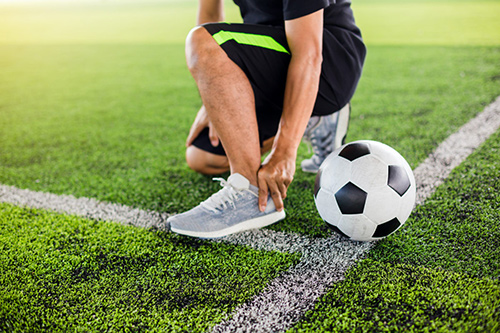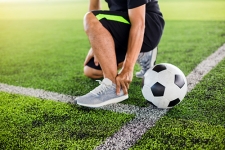
Exercise is essential to maintain a healthy lifestyle. It boosts moods, aids in weight management, and helps the immune system function at an optimal level. However, high-impact sports put added pressure on the feet, which could lead to injury.
Running Impacts Your Feet Directly
Running is a high-impact sport that impacts the health of the foot. As the foot hits the ground, the ankle works to absorb multiple times the weight of the body. The recoil of the Achilles tendon activates the plantar flexion, which propels the body forward. Because running is so high-impact and repetitive, runners face injuries to their ankles and feet.
Playing Basketball On Hard Flooring Can Cause Stress
Basketball players put tremendous stress on the ankles and feet due to the nature of the game. A basketball player does not just run on a hard surface; the players jump, pivot, and change direction quickly. These movements cause ligaments to work outside their normal limits and put pressure on the ankles.
Intricate Footwork In Ballet Stresses The Foot
Ballet dancing can lead to a foot injury and even damage. Many ballet dancers wear pointe shoes, which means their entire body weight is supported by their extended feet. Not all dancers dance on their toes, but they do a tremendous amount of jumping, lifting, and landing. These movements lend themselves to similar injuries as other high-impact sports.
Soccer Is Tough On The Ankles And Foot
In the sport of soccer, there is not just running. Players also cut quickly from side to side, change direction, and jump. Because of the constant movement of the sport, players experience multiple foot and ankle injuries. These injuries are not just from overuse while practicing and playing because soccer is a contact sport. Because of this, players experience trauma injuries, as well.
Easily Sprained Ankles While Playing Hockey
Hockey may not seem like a high-impact sport, and a hockey skate offers stability for the ankle. However, hockey players often face sprains higher up on the ankle and experience damage to the tendons that connect the lower leg to the ankle. Also, due to the nature of hockey skates, players frequently struggle with bone spurs and inflammation of the tendon on the top of the foot.
Common Injuries Due to High-Impact Sports
Athletes who engage in high-impact sports that involve jumping, sudden changes in direction, and running are at higher risk of foot and ankle injuries. Some of these injuries include:
- Plantar fasciitis is a condition where the band of tissue called the plantar fascia, which supports the foot, becomes inflamed. This pain is due to small tears in the fascia. This pain is worse upon standing or movement after a period of rest.
- Achilles tendonitis affects the Achilles’ tendon. The damage to this tendon is the result of overuse and how the tendon wears down over time.
- Fractures are common injuries that involve the fracturing of one of the many bones in the foot or ankle. Stress fractures are created due to repeated stress that causes small breaks in the bones.
- Sprains are related to the ligaments as they are stretched or twisted. This type of injury is usual in sports that require quick stopping, jumping, and changing direction quickly.
Minimize the Damage To Your Feet
Athletes can minimize damage by taking some precautions to avoid damage from repetitive stress to the ankles and feet. Wearing the right shoe for the sport is vital to prevent injury or damage to the feet and ankles. Furthermore, athletes who engage in ongoing and proper training for their sport experience fewer injures. Lastly, proper warming up increases the temperature of the muscles and increases blood flow. This increases performance and lowers the risk of injuring tendons and muscles.
Any sport can cause damage or stress to the feet. The orthopedic surgeons and physical therapists here at Prairie Orthopaedic, in Lincoln, Nebraska, specialize in treating all types of foot and ankle injuries – give us a call to schedule an appointment today!

